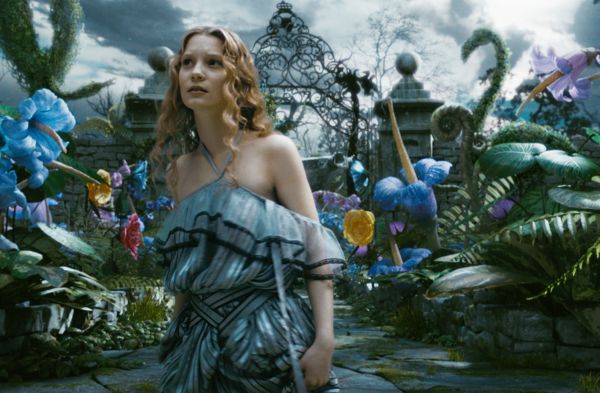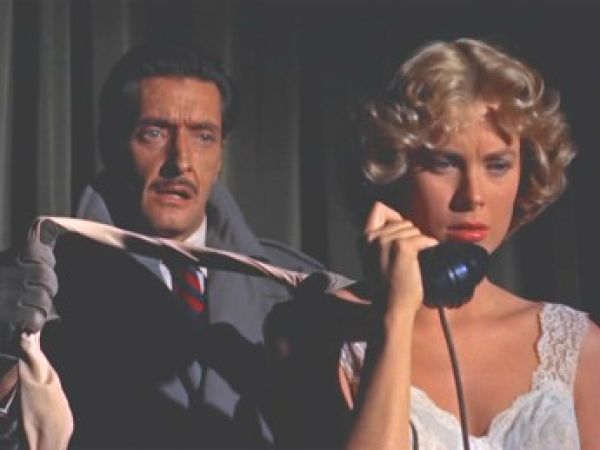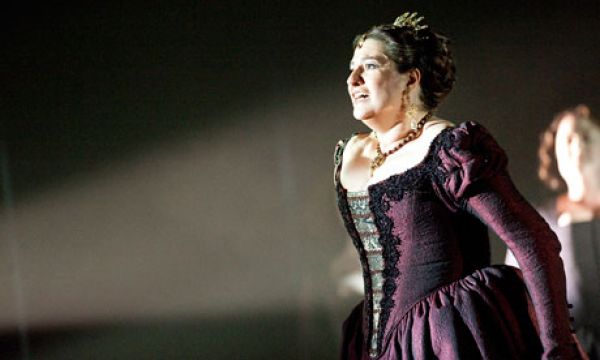Opinion: 3D is as revolutionary as the talkie | reviews, news & interviews
Opinion: 3D is as revolutionary as the talkie
Opinion: 3D is as revolutionary as the talkie
It's not just Hollywood who should be embracing 3D technology

Tainted by its origins and association with the pulp cinema of the 1950s (classics like Bwana Devil, It Came from Outer Space and House of Wax were pioneers of stereoscopic technology), 3D cinema has remained the province of entertainment cinema, a novelty no art-house auteur would touch.
Yet, limitations aside, Cameron’s film came close to starting the most urgent conversation to not quite emerge from this technology. It is surely no coincidence that his 3D epic takes virtual and alternative reality as its subject – an unusually self-reflexive gesture for a Hollywood heavyweight, and one shared by 1982’s TRON. As we follow the (rather too symbolically) disabled Jake Sully on his remote adventures, we, the viewers locked in our own darkened pod, find our cinematic experience mirrored and our reactions implicated and thematised. Call the film a parable about eco-responsibility, about how, according to Cameron, we “interact with our fellow man”, but at issue is surely cinema itself. Avatar is a meta-narrative on the condition and possibilities of the 3D experience.
 Too busy playing with the funny glasses, gearing up for Alice in Wonderland (pictured right), Toy Story 3 and a spate of comic-strip and horror movies, we were all much too preoccupied to stop and ponder this – film-makers most of all. The fact that post-production 3D (in which a film originally shot in 2D such as Clash of the Titans is artificially enhanced into 3D) has emerged as a phenomenon, speaks to the widespread attitude that still considers 3D a gimmick, a decorative effect to be draped artfully over a film without materially changing it. What Cameron inadvertently proved in Avatar, and what Hitchcock explored in rather more calculated fashion in the ill-fated 3D Dial M for Murder (pictured below), was that this technology has the potential to change not only the way we package cinema, but the way we perceive and construct it.
Too busy playing with the funny glasses, gearing up for Alice in Wonderland (pictured right), Toy Story 3 and a spate of comic-strip and horror movies, we were all much too preoccupied to stop and ponder this – film-makers most of all. The fact that post-production 3D (in which a film originally shot in 2D such as Clash of the Titans is artificially enhanced into 3D) has emerged as a phenomenon, speaks to the widespread attitude that still considers 3D a gimmick, a decorative effect to be draped artfully over a film without materially changing it. What Cameron inadvertently proved in Avatar, and what Hitchcock explored in rather more calculated fashion in the ill-fated 3D Dial M for Murder (pictured below), was that this technology has the potential to change not only the way we package cinema, but the way we perceive and construct it.
Consider the basic paradigm shift from 2D to 3D cinema and the implications it carries with it. From a position outside the frame, observing a narrative both finite and hermetically sealed, we viewers have been invited in, past the proscenium. No longer pressing our noses up against the window we find ourselves in the room, witnesses no longer but co-participants in the action. As director Scott Derrickson has explained of forthcoming 3D adaptation of Milton’s Paradise Lost: “It’s not something you watch, it’s something you’re in… the impact it can have on storytelling, it’s unfathomable.” The politics of the gaze, the contingent and troubled relationship between observer and art that has long occupied literary and film theorists, here become compounded: an issue no longer simply of a gaze but also of a stance.
 In practical terms the impact on our viewing experience of, say, Gnomeo and Juliet or Justin Bieber: Never Say Never is fairly limited. But what if instead we were to watch Irreversible or even Saw 7 in 3D? From a position within the frame, implicated not only voyeuristically but fundamentally in the action, doesn’t our attitude to this material change? Shouldn’t it?
In practical terms the impact on our viewing experience of, say, Gnomeo and Juliet or Justin Bieber: Never Say Never is fairly limited. But what if instead we were to watch Irreversible or even Saw 7 in 3D? From a position within the frame, implicated not only voyeuristically but fundamentally in the action, doesn’t our attitude to this material change? Shouldn’t it?
The social and moral arguments that now come to bear are all familiar from the world of computer games. Here, issues of identification between gamer and sniper/assassin/flesh-eating creature have long attracted debate and concern. Yet the parallel is not exact; we still consume games in a very different way to cinema – the role-play element is fictive, incomplete, its limits self-consciously framed by the screen and the flattened graphic planes. The world where both film and computer games are surely heading, that of immersive, virtual reality, will, however, see them converge. It will be the final turn of the moral screw.
While moral issues are doubtless the most emotive to emerge from 3D film technology, it is the artistic ones that are the most interesting. If we look for a parallel for the current 3D advancement in cinema we might consider the move from silent to talking pictures, the shift from black and white to colour – changes which altered not only the experience of film-going but also the aesthetics of film-making. Each advance has seen film move closer to mimetic reality, closer to its own death as art. 3D is surely the final convulsion of a genre in crisis, a genre evolving to the point of extinction.
 Potentially comparable in its impact to that of photography on 19th-century visual arts, 3D cinema will force conventional film-making to reassess its priorities. While art-house film has long since moved beyond mimesis, its narrative and fictional processes will be drawn even further into question by the alternative format of 3D. Flattening and framing images will become an aesthetic choice as well as an ideological one. Just as animation has gradually become a valid format for serious film-making (thanks to such works as Waltz with Bashir (pictured right) and Persepolis), so 3D films will provide another aesthetic platform and genre within which to work.
Potentially comparable in its impact to that of photography on 19th-century visual arts, 3D cinema will force conventional film-making to reassess its priorities. While art-house film has long since moved beyond mimesis, its narrative and fictional processes will be drawn even further into question by the alternative format of 3D. Flattening and framing images will become an aesthetic choice as well as an ideological one. Just as animation has gradually become a valid format for serious film-making (thanks to such works as Waltz with Bashir (pictured right) and Persepolis), so 3D films will provide another aesthetic platform and genre within which to work.
Perhaps the most encouraging signs of a shift in art-house attitudes has been the details of this year’s Berlin Film Festival, released last week. Although downsizing in some areas, the festival will feature an unprecedented three 3D films, including an animation provocatively included in the competition line-up. While many high-profile directors such as Christopher Nolan and Michael Bay have voiced their suspicions of 3D technology, when as powerful a figure as Werner Herzog begins to experiment with it (his documentary, Cave of Forgotten Dreams, will also debut at the festival) it seems only a matter of time before margins give way to art-house mainstream.
 Wim Wenders’s 3D dance film about choreographer Pina Bausch, also showing at Berlin, represents another of the fastest-growing sub-genres within 3D: the performance film. Later this month ENO and Sky will beat the Royal Opera House to the draw, screening Mike Figgis’s new Lucrezia Borgia (pictured left) as the first live 3D opera film. The Royal Opera’s Carmen will follow as a 3D cinematic release in March. The advantages of such technology in translating these events to new audiences, privileging the viewer in a way that neither opera house nor theatre can ever achieve, are self-evident, though naturally throwing up their own debates among purists.
Wim Wenders’s 3D dance film about choreographer Pina Bausch, also showing at Berlin, represents another of the fastest-growing sub-genres within 3D: the performance film. Later this month ENO and Sky will beat the Royal Opera House to the draw, screening Mike Figgis’s new Lucrezia Borgia (pictured left) as the first live 3D opera film. The Royal Opera’s Carmen will follow as a 3D cinematic release in March. The advantages of such technology in translating these events to new audiences, privileging the viewer in a way that neither opera house nor theatre can ever achieve, are self-evident, though naturally throwing up their own debates among purists.
The conceptual, ideological and aesthetic impact of 3D technology on cinema is potentially vast. Once film-makers start conceiving films in 3D – integrating its philosophies as well as its processes into their work – the role of conventional 2D films will change forever. We ignore this technology, surrender it to Hollywood and Miley Cyrus movies, at our peril. This cinematic emperor has never been more fully clothed – we can either continue to mock or follow Hitchcock and Herzog into the film-making of the future.
The making of Alfred Hitchcock's Dial M for Murder 3D:
Add comment
The future of Arts Journalism
You can stop theartsdesk.com closing!
We urgently need financing to survive. Our fundraising drive has thus far raised £49,000 but we need to reach £100,000 or we will be forced to close. Please contribute here: https://gofund.me/c3f6033d
And if you can forward this information to anyone who might assist, we’d be grateful.

Subscribe to theartsdesk.com
Thank you for continuing to read our work on theartsdesk.com. For unlimited access to every article in its entirety, including our archive of more than 15,000 pieces, we're asking for £5 per month or £40 per year. We feel it's a very good deal, and hope you do too.
To take a subscription now simply click here.
And if you're looking for that extra gift for a friend or family member, why not treat them to a theartsdesk.com gift subscription?
more Film
 The Perfect Neighbor, Netflix review - Florida found-footage documentary is a harrowing watch
Sundance winner chronicles a death that should have been prevented
The Perfect Neighbor, Netflix review - Florida found-footage documentary is a harrowing watch
Sundance winner chronicles a death that should have been prevented
 Blu-ray: Le Quai des Brumes
Love twinkles in the gloom of Marcel Carné’s fogbound French poetic realist classic
Blu-ray: Le Quai des Brumes
Love twinkles in the gloom of Marcel Carné’s fogbound French poetic realist classic
 Frankenstein review - the Prometheus of the charnel house
Guillermo del Toro is fitfully inspired, but often lost in long-held ambitions
Frankenstein review - the Prometheus of the charnel house
Guillermo del Toro is fitfully inspired, but often lost in long-held ambitions
 London Film Festival 2025 - a Korean masterclass in black comedy and a Camus classic effectively realised
New films from Park Chan-wook, Gianfranco Rosi, François Ozon, Ildikó Enyedi and more
London Film Festival 2025 - a Korean masterclass in black comedy and a Camus classic effectively realised
New films from Park Chan-wook, Gianfranco Rosi, François Ozon, Ildikó Enyedi and more
 After the Hunt review - muddled #MeToo provocation
Julia Roberts excels despite misfiring drama
After the Hunt review - muddled #MeToo provocation
Julia Roberts excels despite misfiring drama
 London Film Festival 2025 - Bradley Cooper channels John Bishop, the Boss goes to Nebraska, and a French pandemic
... not to mention Kristen Stewart's directing debut and a punchy prison drama
London Film Festival 2025 - Bradley Cooper channels John Bishop, the Boss goes to Nebraska, and a French pandemic
... not to mention Kristen Stewart's directing debut and a punchy prison drama
 Ballad of a Small Player review - Colin Farrell's all in as a gambler down on his luck
Conclave director Edward Berger swaps the Vatican for Asia's sin city
Ballad of a Small Player review - Colin Farrell's all in as a gambler down on his luck
Conclave director Edward Berger swaps the Vatican for Asia's sin city
 London Film Festival 2025 - from paranoia in Brazil and Iran, to light relief in New York and Tuscany
'Jay Kelly' disappoints, 'It Was Just an Accident' doesn't
London Film Festival 2025 - from paranoia in Brazil and Iran, to light relief in New York and Tuscany
'Jay Kelly' disappoints, 'It Was Just an Accident' doesn't
 Iron Ladies review - working-class heroines of the Miners' Strike
Documentary salutes the staunch women who fought Thatcher's pit closures
Iron Ladies review - working-class heroines of the Miners' Strike
Documentary salutes the staunch women who fought Thatcher's pit closures
 Blu-ray: The Man in the White Suit
Ealing Studios' prescient black comedy, as sharp as ever
Blu-ray: The Man in the White Suit
Ealing Studios' prescient black comedy, as sharp as ever
 The Woman in Cabin 10 review - Scandi noir meets Agatha Christie on a superyacht
Reason goes overboard on a seagoing mystery thriller
The Woman in Cabin 10 review - Scandi noir meets Agatha Christie on a superyacht
Reason goes overboard on a seagoing mystery thriller
 London Film Festival 2025 - crime, punishment, pop stars and shrinks
Daniel Craig investigates, Jodie Foster speaks French and Colin Farrell has a gambling habit
London Film Festival 2025 - crime, punishment, pop stars and shrinks
Daniel Craig investigates, Jodie Foster speaks French and Colin Farrell has a gambling habit

Comments
...
...
...
...